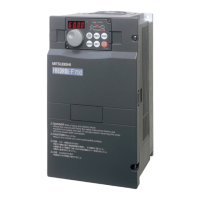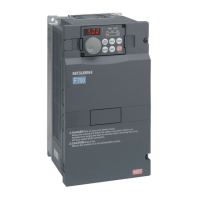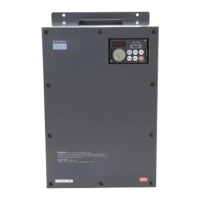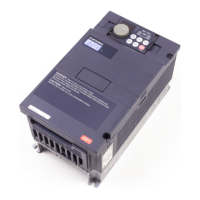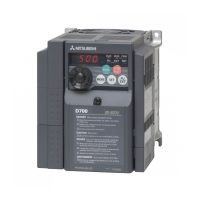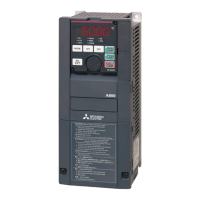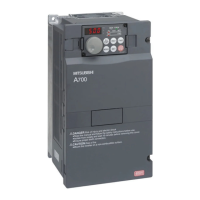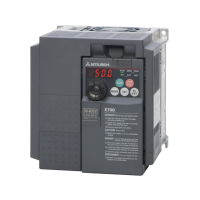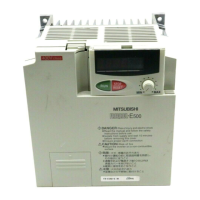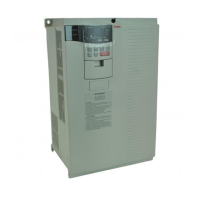249
Check first when you have troubles
5
PROTECTIVE FUNCTIONS
5.5.4 Motor rotates in opposite direction
Check that the phase sequence of output terminals U, V and W is correct.
Check that the start signals (forward rotation, reverse rotation) are connected properly. (Refer to page 105)
5.5.5 Speed greatly differs from the setting
Check that the frequency setting signal is correct. (Measure the input signal level.)
Check that the Pr. 1, Pr. 2, Calibration parameter C2 to C7 settings are correct
Check that the input signal lines are not affected by external noise.
(Use shielded cables)
Check that the load is not too heavy.
Check that the Pr. 31 to Pr. 36 (frequency jump) settings are correct.
5.5.6 Acceleration/deceleration is not smooth
Check that the acceleration and deceleration time settings are not too short.
Check that the load is not too heavy.
Check that the torque boost (Pr. 0, Pr. 46) setting is not too large and the stall prevention function is not
activated.
5.5.7 Motor current is large
Check that the load is not too heavy.
Check that the Pr. 0 Torque boost setting is correct.
Check that the Pr. 3 Base frequency setting is correct.
Check that the Pr. 14 Load pattern selection setting is appropriate.
Check that the Pr. 19 Base frequency voltage setting is correct.
5.5.8 Speed does not increase
Check that the Pr. 1 Maximum frequency setting is correct. (If you want to run the motor at 120Hz or more,
set Pr. 18 High speed maximum frequency. (Refer to page 78.))
Check that the load is not too heavy.
(In agitators, etc., load may become heavier in winter.)
Check that the torque boost (Pr. 0, Pr. 46) setting is not too large and the stall prevention function is not
activated.
Check that the brake resistor is not connected to terminals P/+-P1 accidentally.
3) Others
5.5.9 Speed varies during operation
1) Inspection of load
Check that the load is not varying.
2) Check the input signals
Check that the frequency setting signal is not varying.
Check that the frequency setting signal is not affected by noise.
Check for a malfunction due to undesirable currents when the transistor output unit is connected.
(Refer to page 30)
Check that the wiring length is not too long for V/F control
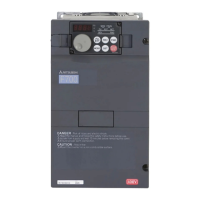
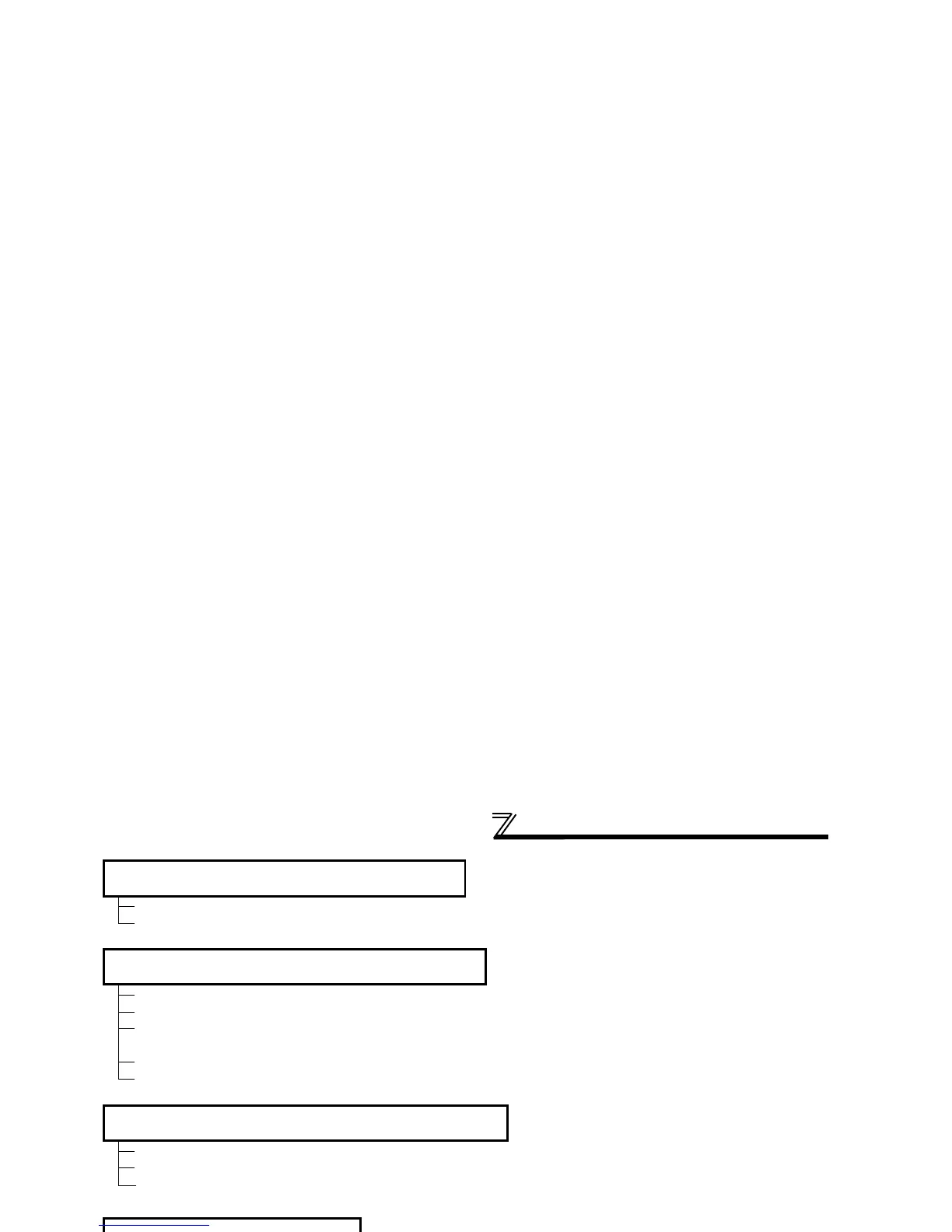